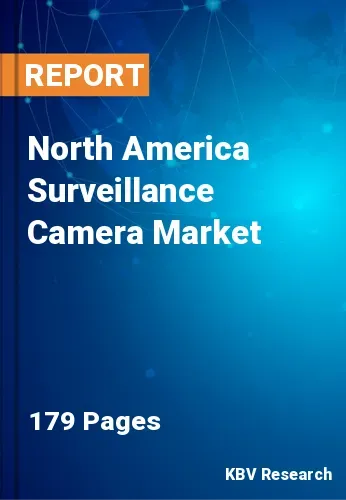The North America Surveillance Camera Market would witness market growth of 9.4% CAGR during the forecast period (2023-2030). In the year 2019, the North America market's volume surged to 138.5 million units, showcasing a growth of 9.0% (2019-2022).
Technological advancements represent a driving force that continues to push the boundaries of what surveillance cameras can achieve. Surveillance capabilities have been revolutionized by technological advances like machine learning (ML), the Internet of Things (IoT), and artificial intelligence (AI). AI-powered cameras can perform tasks such as facial recognition, object tracking, and predictive analytics, making surveillance more effective and intelligent. These technological advances have expanded the potential applications of these beyond mere monitoring to proactive threat detection and analysis.
AI and ML have empowered surveillance cameras with intelligent capabilities. AI algorithms can analyze video feeds in real-time, recognizing objects, individuals, and patterns of behaviour. This enables proactive threat detection, automated alerts, and data-driven decision-making, significantly enhancing the effectiveness of surveillance systems. Facial recognition has gained prominence as a powerful tool in surveillance. Cameras equipped with facial recognition technology can identify individuals from a database, enabling access control, visitor management, and enhanced security measures.
North America is at the forefront of technological innovation, extending to the market. They are extensively used along the US-Mexico border to detect and deter illegal border crossings, drug trafficking, and other illicit activities. These cameras are often part of integrated surveillance systems that include thermal imaging, motion sensors, and drone technology. They provide real-time video feeds to Border Patrol agents, helping them identify and respond to potential threats. The growth of the market in North America is propelled by a combination of the aforementioned factors.
The US market dominated the North America Surveillance Camera Market by Country in 2022 and would continue to be a dominant market till 2030; thereby, achieving a market value of $12,341.7 million by 2030. The Canada market is experiencing a CAGR of 11.9% during (2023 - 2030). Additionally, The Mexico market would exhibit a CAGR of 10.9% during (2023 - 2030).
Based on Deployment, the market is segmented into Outdoor, and Indoor. Based on Product Type, the market is segmented into IP-based (Wired, and Wi-Fi), Cellular Camera, and Analog Camera. Based on Resolution Capacity, the market is segmented into High Definition (HD), Full High Definition (FHD), and Ultra High Definition (UHD) (4K). Based on End-use, the market is segmented into Commercial Infrastructure, Industrial, Public Facilities, Military & Defense, Residential, and Others. Based on countries, the market is segmented into U.S., Mexico, Canada, and Rest of North America.
Free Valuable Insights: The Global Surveillance Camera Market is Predict to reach USD 72.4 Billion by 2030, at a CAGR of 10.2%
The market research report covers the analysis of key stake holders of the market. Key companies profiled in the report include Eye Trax, Inc, Milesight Technology Co., Ltd., Swann Communications Pty. Ltd. (Infinova Corporation), Honeywell International, Inc., Cisco Systems, Inc., Nokia Corporation, Panasonic Holdings Corporation, Robert Bosch GmbH, Teledyne FLIR LLC (Teledyne Technologies Incorporated), and Zhejiang Dahua Technology Co., Ltd.
By Deployment (Volume, Million Units, USD Billion, 2019 to 2030)
By Product Type (Volume, Million Units, USD Billion, 2019 to 2030)
By Resolution Capacity (Volume, Million Units, USD Billion, 2019 to 2030)
By End-use (Volume, Million Units, USD Billion, 2019 to 2030)
By Country (Volume, Million Units, USD Billion, 2019 to 2030)

Our team of dedicated experts can provide you with attractive expansion opportunities for your business.

